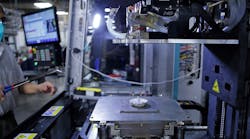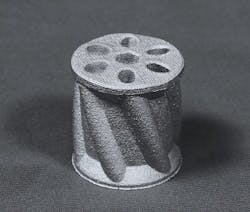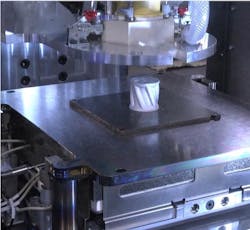Additive manufacturing has undoubtedly enjoyed significant attention over the past year -- and for good reason. As supply incidents have hampered day-to-day operations, additive technology has enabled manufacturers to find creative ways to fill immediate needs. Understandably, this was great for additive as a whole. However, more importantly, it has helped manufacturers better understand where the technology can fit going forward, especially when collaborating with technology providers and educational institutions.
Case in point? Xerox and the Naval Postgraduate School (NPS) recently announced a strategic collaboration focused on advancing additive manufacturing research, specifically 3D printing, which has the potential to dramatically transform the way the military supplies its forward-deployed forces. The goal is to conduct thesis research to develop new capabilities for the Navy and Marine Corps.
“The military supply chain is among the most complex in the world, and NPS understands first-hand the challenges manufacturers must address,” said Xerox Chief Technology Officer Naresh Shanker. “This collaboration will aid NPS in pushing adoption of 3D printing throughout the U.S. Navy, and will provide Xerox valuable information to help deliver supply chain flexibility and resiliency to future customers.”
Tali Rosman, vice president and general manager, 3D printing at Xerox tells IndustryWeek, “In this collaboration, the ultimate vision is a long-term plan of enabling the placement of 3d printers on ships to make the spare parts are available on demand instead of either keeping inventory or needing to send parts into the ships. We are learning a lot from their feedback – what works and what doesn't, what aspects are user friendly, what is less intuitive and where we need to help.”
Down to the wire
As Xerox developed its approach to additive manufacturing, it was squarely focused on supply chain resiliency. “We looked at the inefficiencies present in today’s supply chains. And COVID really brought that point home, in terms of emphasizing how supply chains are actually not as resilient, as people thought,” she says. “After all, 80% of the companies in the US struggled to get the parts that they needed in 2020. We really think our technology is also unique in a lot of senses, but mostly around the use of wire, instead of the powders the vast majority of the metal 3d printer today use today.”
The Xerox ElemX printer uses cost-effective aluminum wire to fabricate end-use parts that can withstand the rigors of operational demands. This ability to produce reliable replacement parts on-demand reduces the dependency on complex global supply chains for deployed forces and also addresses the hidden costs of traditional manufacturing.
“Starting with wire makes our technology much easier to implement and integrate into existing manufacturing operations because there is no need for expensive facility modifications in order to accommodate for a printer,” she says. “Our goal is to help with the supply chain resiliency without creating a whole new host of issues to tackle.”
Xerox is using Aluminum 4008, which has similar properties to cast alloy 356. As such Xerox is seeing customers use it to make part that are typically aluminum, zinc or magnesium because it its properties allow it to serve as a replacement. These are often low volume spare parts such as parts for an aircraft, tractor or digital presses that have been around for 15-20 years. “The type of use cases include instances where finding spare parts is difficult, where it is hard to find the drawing or where it does not make sense for the original supplier to fill an order using traditional manufacturing methods,” she says.
Using wire is also cost effective, explains Rosman. “While it can vary by part, on average versus powder bed fusion, wire is 40% cheaper and 40% faster,” she says. “Some of that has to do with the material cost because we're using non-proprietary standard wire. The savings also come from the faster cycle times since there is no need to do any powder removal at the end meaning the post processing is much faster using less labor and taking less time.”






